I have the following dataset:
Name TOR_A Success_rate_A Realizable_Prod_A Assist_Rate_A Task_Count_A Date
1 BVG1 2.00 85 4.20 0.44 458 31/01/2014
2 BVG2 3.99 90 3.98 0.51 191 31/01/2014
3 BVG3 4.00 81 8.95 0.35 1260 31/01/2014
4 BVG4 3.50 82 2.44 4.92 6994 31/01/2014
5 BVG1 2.75 85 4.00 2.77 7954 07/02/2014
6 BVG2 4.00 91 3.50 1.50 757 07/02/2014
7 BVG3 3.80 82 7.00 1.67 7898 07/02/2014
8 BVG4 3.60 83 3.50 4.87 7000 07/02/2014
I wish to plot a ggplot line graph with Date on x-axis and TOR_A, Success_rate_A etc. on y-axis. I would also like to see it by the Name column. How can I prepare this dataset to achieve this objective?
I tried reshape in R but couldn't make it work.
UPDATE
Done it using reshape2::recast method as show below:
data_weekly = recast(data_frame_to_be_reshaped,variable+Name~Date,id.var=c(Name,Date))
